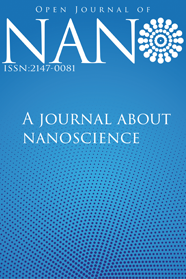Yüksek Dayanımlı Beton Üretiminde Mermer Tozu Kullanımının Araştırılması
Bu çalışmanın amaçlarından birincisi, yüksek dayanımlı betonlar (YDB) için optimum miktarda kullanılacak mermer tozu miktarının belirlenmesidir. İkincisi, YDB üretiminde atık malzemelerden mermer tozu kullanarak doğal kaynakların kullanımının azaltılmasına katkı sağlamaktır. Bunun için ince agrega mermer tozu ile ağılıkça %0, %8, %16 ve %24 oranlarında yer değiştirilerek kullanılmıştır. Beton karışımlarda puzolanik aktiviteyi arttırmak ve mermer tozunun maksimum kullanımını sağlamak için çimentonun ağırlıkça %10’u kadar silis dumanı ilave edilmiştir. Elde edilen karışımlara slump deneyi uygulanmıştır. Daha sonra fc-7., fc-28. ve fc-90. günlerde basınç dayanımı testine tabi tutulmak üzere kür havuzunda bekletilmiştir. Basınç dayanımı testinden alınan sonuçlara göre optimum mermer tozu miktarı, yüksek dayanım değeri dikkate alınarak belirlenmiştir. Ayrıca mermer tozu kullanımının, beton basınç dayanımına, doğal kaynak tüketimine ve çevre kirliliğinin azaltılmasına olumlu yönde katkı sağladığı düşünülmüştür.
Anahtar Kelimeler:
Yüksek dayanımlı beton, mermer tozu, basınç dayanımı, silis dumanı
Investigation of the Use of Marble Powder in Production of High Strength Concretes
The first of the aims of this study is to determine the amount of marble powder to be used in the optimum amount for high strength concrete (YDB). The second is to contribute to reducing the use of natural resources by using marble powder from waste materials in the production of YDB. For this purpose, marble powder was used by replacing it with fine aggregate at 0-8-16-24% by weight. In order to increase the pozzolanic activity in concrete mixtures and to ensure maximum use of marble powder, silica fume has been used by replacing it with cement at 10% by weight. The slump test was applied to the obtained mixtures. Then fc-7., fc-28. and fc-90. days, it was kept in the curing pool to be subjected to the compressive strength test. According to the results obtained from the compressive strength test, the optimum amount of marble powder was determined by taking into account the high strength value. In addition, it is thought that the use of marble powder contributes positively to the compressive strength of concrete, consumption of natural resources and reduction of environmental pollution. Keywords: High strength concrete, marble powder, compressive strength, silica fume.
Keywords:
High strength concrete, marble powder, compressive strength, silica fume,
___
- [1] R. Zhong, K. Wille, and R. Viegas, “Material efficiency in the design of UHPC paste from a life cycle point of view,” Constr. Build. Mater., vol. 160, 2018.
- [2] S. Abbas, A. M. Soliman, and M. L. Nehdi, “Exploring mechanical and durability properties of ultra-high performance concrete incorporating various steel fiber lengths and dosages,” Constr. Build. Mater., 2015.
- [3] D. K. Ashish, “Concrete made with waste marble powder and supplementary cementitious material for sustainable development,” J. Clean. Prod., vol. 211, pp. 716–729, 2019.
- [4] K. E. Alyamac, E. Ghafari, and R. Ince, “Development of eco-efficient self-compacting concrete with waste marble powder using the response surface method,” J. Clean. Prod., vol. 144, pp. 192–202, 2017.
- [5] K. E. Alyamac and A. B. Aydin, “Concrete properties containing fine aggregate marble powder,” KSCE J. Civ. Eng., vol. 19, no. 7, pp. 2208–2216, 2015.
- [6] A. A. Thakare, A. Singh, V. Gupta, S. Siddique, and S. Chaudhary, “Sustainable development of self-compacting cementitious mixes using waste originated fibers: A review,” Resour. Conserv. Recycl., p. 105250, 2020.
- [7] R. Kumar, S. Singh, and L. P. Singh, “Studies on enhanced thermally stable high strength concrete incorporating silica nanoparticles,” Constr. Build. Mater., vol. 153, pp. 506–513, 2017.
- [8] J. Wang, Y. Wang, Y. Sun, D. D. Tingley, and Y. Zhang, “Life cycle sustainability assessment of fly ash concrete structures,” Renew. Sustain. Energy Rev., vol. 80, pp. 1162–1174, 2017.
- [9] P. and C. C. Cement - Part 1: General Cements, Composition, “TS EN 197-1,” Turkey, 2012.
- [10] O. Soykan, Ö. Cengiz, and Ö. Cenk, “Investigation of the Usability of Slate and Andesite as Concrete Aggregate,” J. Suleyman Demirel Univ. Grad. Sch. Nat. Appl. Sci., vol. 19, no. 1, 2015.
- [11] A. D. Öcal and M. Dal, “Decays in natural stones,” Archit. Found. Econ. Enterp. Istanbul, 2012.
- [12] N. M. Azmee and N. Shafiq, “Ultra-high performance concrete: From fundamental to applications,” Case Stud. Constr. Mater., vol. 9, 2018.
- [13] V. Singhal, R. Nagar, and V. Agrawal, “Use of marble slurry powder and fly ash to obtain sustainable concrete,” Mater. Today Proc., vol. 44, pp. 4387–4392, 2021.
- [14] S. Chithra, S. R. R. Senthil Kumar, and K. Chinnaraju, “The effect of Colloidal Nano-silica on workability, mechanical and durability properties of High Performance Concrete with Copper slag as partial fine aggregate,” Constr. Build. Mater., vol. 113, 2016.
- [15] S. A. Khedr and M. N. Abou-Zeid, “Characteristics of silica-fume concrete,” J. Mater. Civ. Eng., vol. 6, no. 3, pp. 357–375, 1994.
- Yayın Aralığı: Yılda 2 Sayı
- Başlangıç: 2012
- Yayıncı: Mustafa CAN
